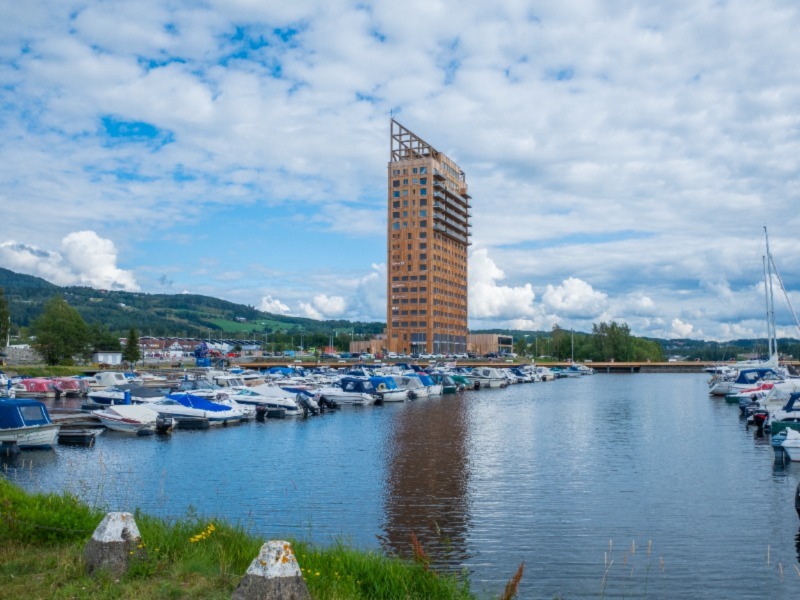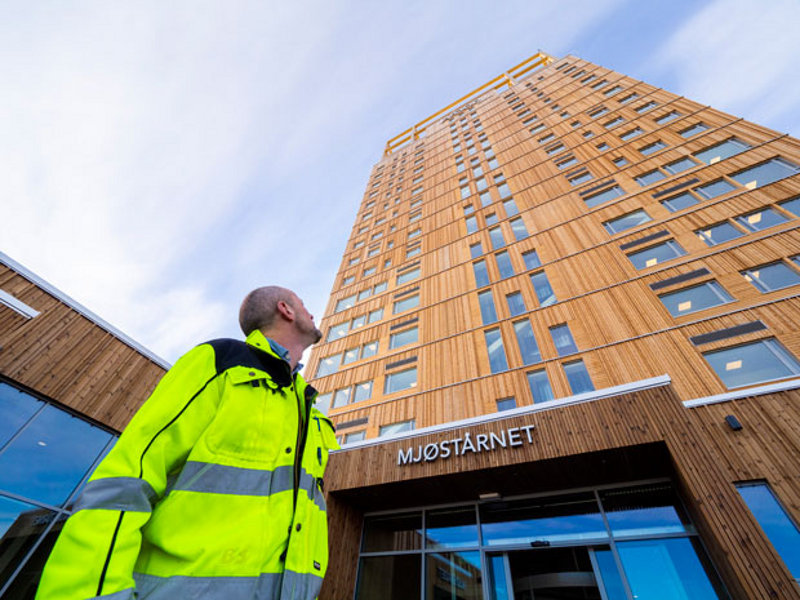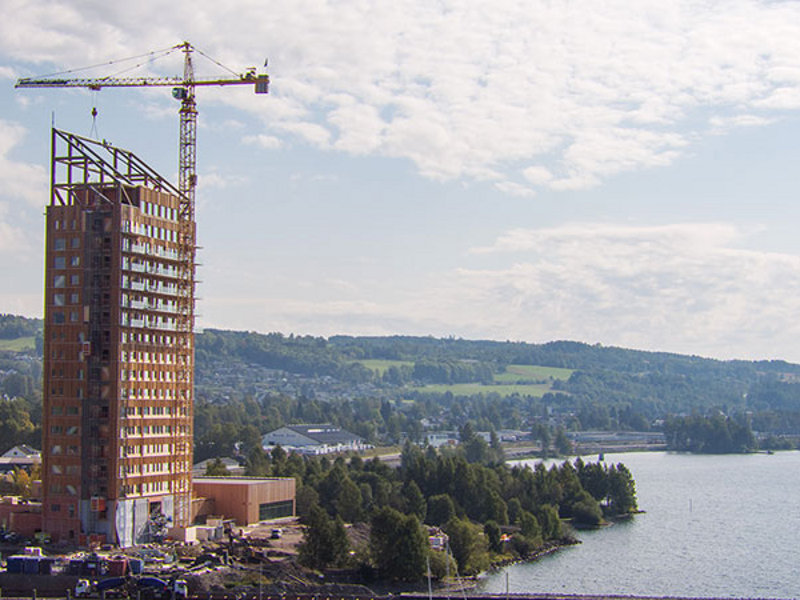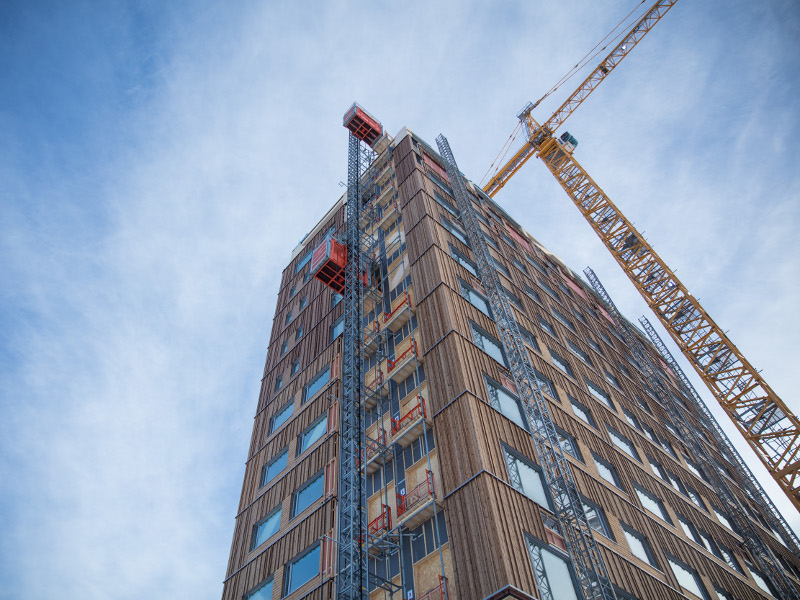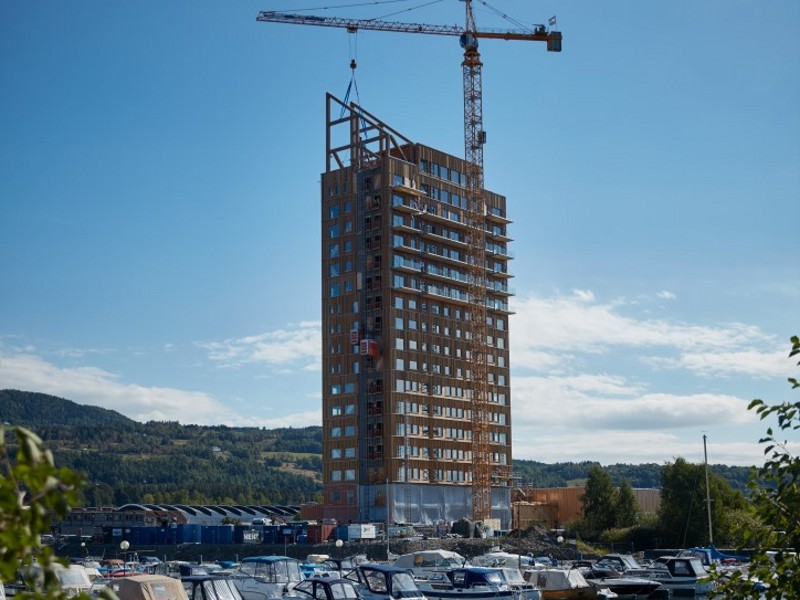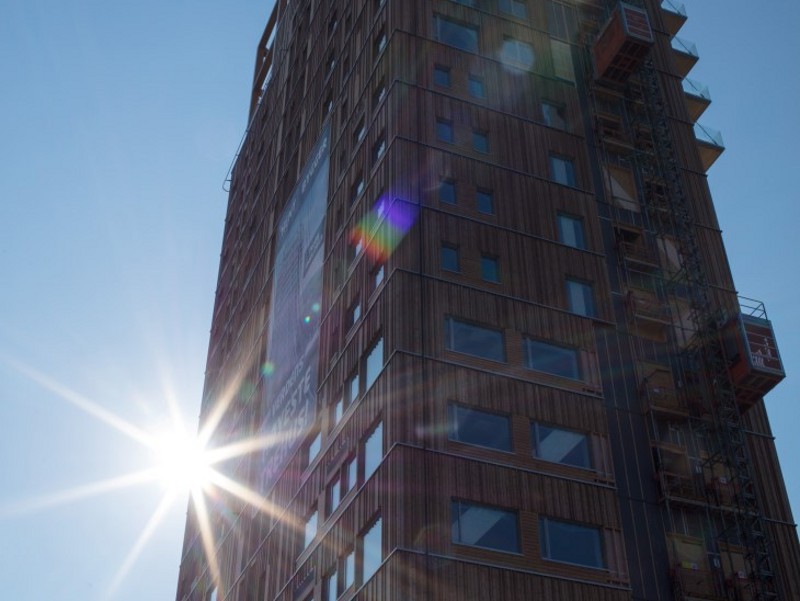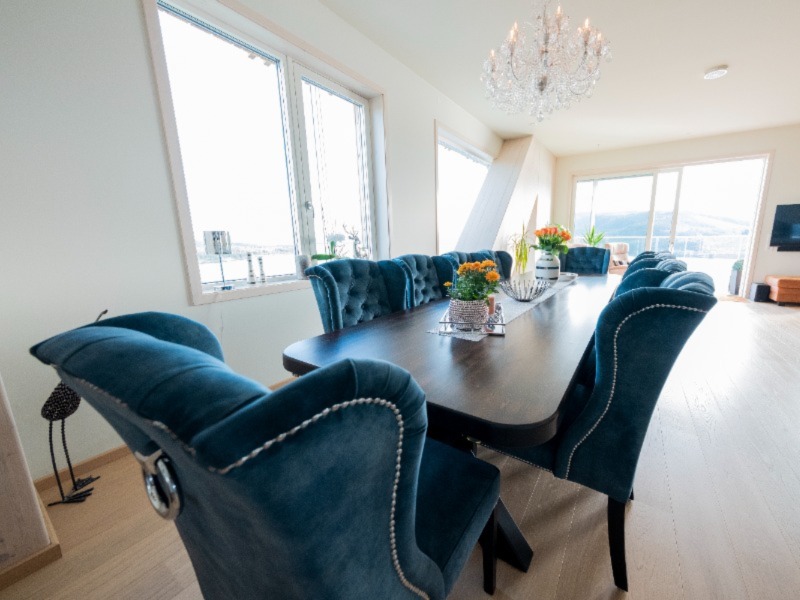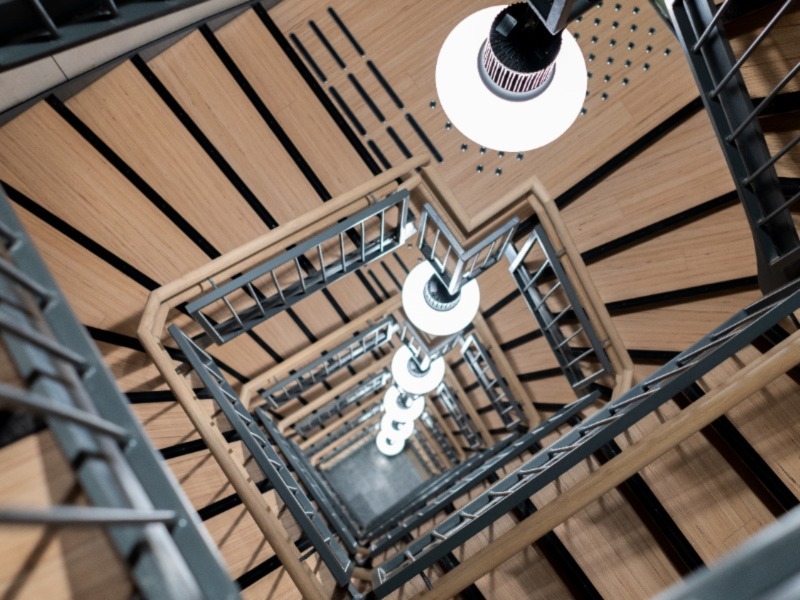Mjosa Tower (Mjostarnet) is an 85.4m-tall mixed-use timber building in Brumunddal, Norway. It is the third-tallest building in the country, and recognised as the world’s tallest timber tower by the Council on Tall Buildings and Urban Habitat.
Owned by AB Invest, the wooden skyscraper is named after the country’s biggest inland lake, Mjosa.
Earthworks for the building commenced in April 2017, while the installation of timber structures began in September 2017. The structural topping-out ceremony was held in September 2018 and the building was officially opened in March 2019.
Location
The Mjosa Tower is located in the small town of Brumunddal, on the riverbank of Lake Mjosa a short drive north of the Norwegian capital, Oslo.
Mjosa Tower design details
Mjosa Tower has 18 storeys with a combined floor area of approximately 11,300m². It consists of 33 apartments ranging between 50m² and 180m² in size, 72 hotel rooms, offices, a restaurant, a rooftop terrace, a conference centre and common areas.
The ground floor houses a lobby, reception and restaurant for the public, while the second storey comprises rentable meeting rooms and technical facilities. The offices are spread across floors three to seven, while the four floors above them incorporate 18 hotel rooms each.
The Mjostarnet Tower incorporates residential apartments from the 12th to the 16th floors. There are a total of 33 apartments within the tower, ranging in size between 50m² and 180m².
The 17th storey is reserved for two of the remaining three apartments, along with an event room for weddings, celebrations and larger conferences. The top floor has one penthouse apartment and a public-viewing terrace.
The project also included the development of a 4,900m² swimming hall with two 25m-long pools, which are also made of wood.
Materials used in Mjosa Tower
Sustainable wooden materials are used in the construction of both the structure and facade of the Mjostarnet skyscraper. The building contains 2,600m³ of timber structures.
The decks on floors two to 11 are made of prefabricated wood components, while the decks on the next seven floors are built using 300mm concrete to improve the strength of the building.
The intermediate flooring between all the levels is built using light, environment-friendly Kerto-Q LVL (laminated veneer lumber) cross-bonded veneer panels, which gives improved load-bearing capacity.
The internal columns, beams and diagonals of the building are formed by planing and gluing large-scale glued laminated timber (glulam) that is pliable and fire-resistant. Cross-laminated timber (CLT) material was used for the inner walls, elevator shafts, balconies and stairs.
The envelope of the building is formed by integrating large, prefabricated facade elements. Large-scale glulam trusses are arranged along the facades to withstand loads. Steel plates and dowels are used to connect all glulam elements of the tower.
Sustainability features of Mjosa Tower
Timber offers excellent insulation properties, contributing to energy efficiency in the building.
The natural thermal properties of wood help regulate temperature and reduce the need for excessive heating or cooling, resulting in lower energy consumption and reduced environmental impact.
Safety measures of Mjosa Tower
Designed in accordance with Eurocode 5 timber design standards, the Mjostarnet wooden tower can withstand extensive fire.
An upscale sprinkler system capable of holding a greater volume of water is installed to further increase the fire safety in the building. All the facilities in the tower are equipped with separate fire safety systems to control the spread of fire horizontally and vertically.
The outer wall elements are designed to prevent the spread of fire via the facade.
Contractors involved
HENT was appointed as the turnkey contractor for the project under a Nkr500m ($57m) contract with AB Invest.
Moelven Limtre produced glulam, Kerto, and cross-laminated timber structures for the wooden building, under a Nkr47m ($5.37m) subcontract awarded by HENT.
Voll Arkitekter designed the Mjosa Tower, while Sweco Norge provided consulting services in fire engineering, structural engineering and acoustics.
SSAB supplied RD piles for the building while Hallingdal Bergboring carried out the installation of pile foundations. The facade was developed by Ringsaker Takelementer.
Kerto® LVL used in the building’s flooring was produced by Metsa Wood, while the CLT was produced by Stora Enso and wooden cladding was supplied by Woodify.

